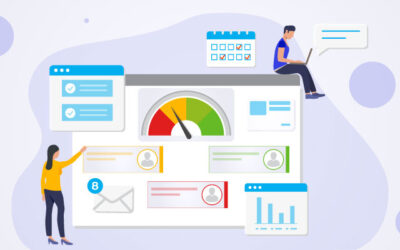How to Create an Effective Workflow Template
Workflows, also known as workflow diagrams, show a sequence of tasks to perform to do a job. These visualize the accurate steps to be followed, the machines or employees in charge of each step, and the conditions which allow the series to proceed further. Workflows are illustrated using pictures and graphics or charts and layouts with several standardized symbols linked to each other with arrows, indicating the direction of the flow. Nowadays, you get many readymade workflow templates online.
A Short History of Workflows
In the 1980s, the idea of total quality management gained fame as firms sought to become competitive globally. Frederick Winslow Taylor and Henry Gantt, two prominent people among those who first studied the rational organization of labor, specifically in the manufacturing industry, developed the concept of the workflow then. The term “workflow” appeared for the first time in 1921 in a railway engineering journal.
In those early days, this concept existed only in paper documentations and inter-office mails. Over time, these started taking shapes of email threads and spreadsheets. And with further technological sophistication, today, we have automated workflows, in which the manual tasks have been switched by self-operating processes, thus saving money and eliminating human error.
The Importance of having workflows
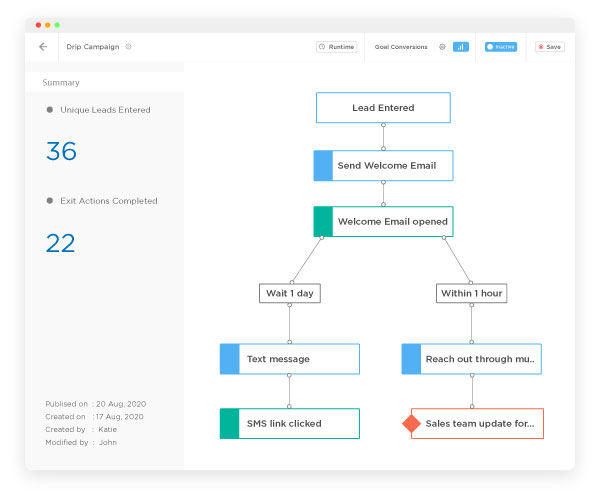
There are many benefits of using workflows in any firm or organization. Here is a list of those.
- Streamline processes: Businesses and organizations carry out many processes. By having workflows, the tangles in these processes are smoothed out and organized.
- Speed-up processes: Since manual data entry gets eliminated with automated workflows, internal processes get speed-up.
- Remove redundant tasks: Workflows help identify redundancy. Thus, the performing of unnecessary tasks gets eliminated.
- Identify process bottlenecks: Works help in recognizing and removing process barriers, and hence improving efficiency.
- Allocate tasks based on skill sets: Workflows help assign tasks to staff with the most appropriate skill sets.
- Reduce micromanagement: Micro-management refers to the delay in the progress of a task owing to delayed approvals. Since workflows automate most tasks and allow for 24/7 approvals, micromanagement gets significantly reduced.
- Reduce errors: Workflows reduce human errors, and thus, re-work to a great extent.
- Reduce risks: Many risks associated with manual handling of processes such as to request approval, hires, contracts, etc. are reduced with workflows.
- Increase productivity: The increased work efficiency, reduced risks, and errors, elimination of redundancy, etc. increase your firm’s output and productivity.
- Real-time tracking of status: Workflows allow you to track the progress level of requests and processes in real-time. For instance, you get to know whether a request has been completed, in-progress, or is pending.
- Reduce paperwork: Workflows drastically lower paperwork. This also significantly reduces the costs and wastage associated.
- Performance observation: Workflows help you observe the performance trends of individuals and teams over time. It also helps keep an eye on a team’s progress against service level agreements.
- Manual decision making reduced: Workflows greatly reduce the need for making many business decisions manually.
- Automated alerts: Staff members are sent alerts and reminders with the aging of tasks.
- Facilitates transparency: Keeps the processes and their progress transparent to all the members of a team.
- Improved communication: Workplace communication is critical, but is often poor in many firms. Workflows improve this via increasing transparency of processes and accountability of employees.
- Improves collaboration: Workflows improve collaboration among the members within a team and teams in your firm or organization.
- Facilitates product or service improvement: By providing better insight into your business processes, reducing human-errors, and enabling the right aligning of tasks to human resources, workflows help to improve the quality of your products and services.
- Focus on value-added tasks: Since automation takes care of many repetitive tasks, the management and staff get more time to focus on value-added tasks and projects.
The need for workflow templates
In the past, when workflows were only on a piece of paper, anyone could create a workflow. But as these moved to the digital sphere, the creation of these became too complex for ordinary people. It became a coders-only domain, where only process engineers and developers could do it.
However, with the introduction of workflow templates, a part of the creative ability is restored to the common man. Now you can create a workflow online as simple as you could draw it on paper. The forthcoming part of this article will let you know how you can create even a template.
Having your templates created rather than going for readymade templates would be great, as these would be designed to suit the specific requirements of your organization. These templates can get edited and updated with changes or updates being made to the processes in your organization or firm. Thus, these become one of your big assets.
The Steps to Create Workflow Templates
By following the below-given seven easy steps, you can create an effective template for any business process. If you are pressed for time, we suggest using a workflow builder like PeppyBiz Workflow Builder, a drip marketing automation solution.
1. Identify Your Resources
The resources needed for workflows include a series of operating procedures and the people or machines in charge of handling those. So, before you start to create a workflow for a process, get to know the procedures and the bottlenecks faced by process owners.
For example, if you are creating an e-commerce order tracking workflow, you need to talk to the shipping team and get to know how they handle the process manually. Learn what they would anticipate from an online workflow, and try to recreate it.
2. Track the Tasks That Need to be Carried Out
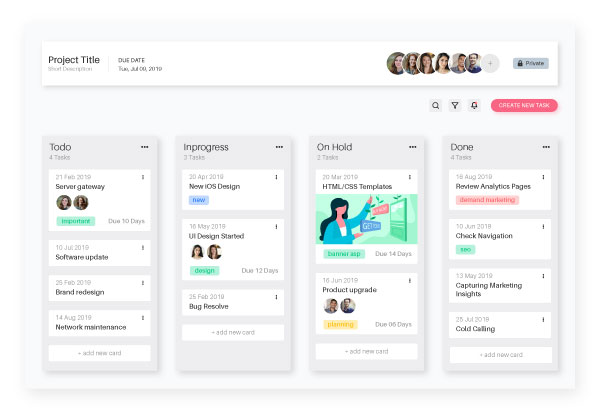
Some workflows are simple and have a linear path of tasks to be accomplished. On the other hand, some workflows are complex with conditional or parallel tasks. When there are conditional tasks, certain conditions should be met to advance to the next step. And when there are parallel tasks, two different tasks need to be simultaneously performed.
So, gain a complete idea of the structure of the task, and the data exchanged in tasks before you start creating your workflow template.
An instance of conditional tasks in a workflow is that of the content editorial workflow. It would need to fetch the written content from the writer and pass it on to the editor. If the editor approves it, it goes for being published. If he suggests some modifications, it is sent back to the writer with a note to make specific amends.
And an example of parallel tasks in a workflow is that of a travel workflow in a big company, where employees have to travel frequently for work-related purposes. Here, several tasks such as booking flight tickets, making food and boarding arrangements, and arrangements for meeting with clients need to be accomplished simultaneously.
3. Assign Roles to Those Responsible for Each Task

After getting a good grab of the structure and nature of the tasks, find the individuals or machines that will perform the tasks involved. While some tasks could automatically advance to the next step, others may need reviewing or approval by an authority before proceeding to the next step.
List down all the stakeholders alongside their specific responsibilities and the details required to smoothly perform those tasks. On this basis, come up with specific soles and set accountability for each task.
For instance, in an invoice approval workflow, an employee would send his or her invoice to the manager (input task). The finance manager needs to either approve or reject it based on certain pre-established criteria (approval task). And other stakeholders, like HR and accounting staff, might only have to look at the approval status.
4. Draw a Workflow Diagram to Visualize the Process
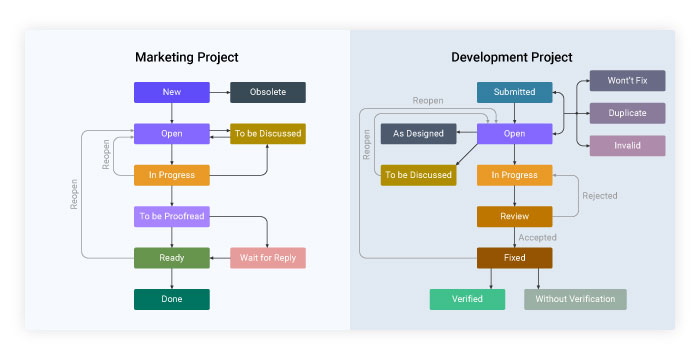
Now you are set to draw your workflow diagram. It should visually represent the entire workflow. It is suggested that you use a simple workflow management tool available online. It would allow you to drag and drop visuals to create attractive workflows. When you select a tool, make sure that it is user-friendly, and thereby would easily allow you to create the digital version of your paper-based workflow.
5. Test your Workflow Templates
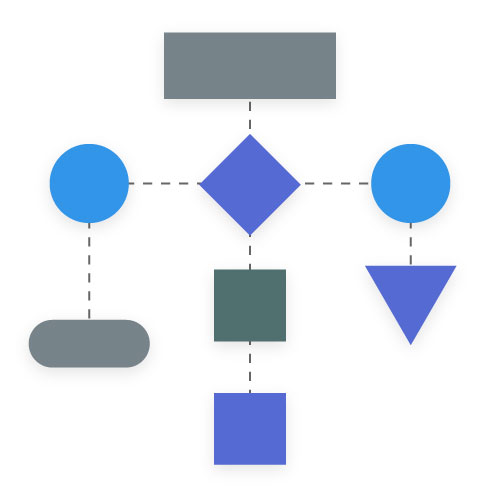
Once you have created the workflow templates, you need to test it for its effectiveness in an online environment. Your workflow may appear flawless outside, but you will know its defects only when it is meticulously tested.
For carrying out the testing, you should include everyone involved in the workflow. Ask them to aid you in identifying issues and in recognizing ways to fix those. Use their feedback to alter and improve your workflow prototype.
6. Prime Your Team for the New Workflow

Your workflow may function desirably, but that doesn’t conclude it all. All those involved in the workflow may not be initially comfortable dropping their current practice and switching to a new one. Often, this is due to apprehensiveness, that is, the fear of the unknown.
So, do conduct a training program to eradicate their reluctance and make them confident to use the new workflow. You may share your experience regarding how you created the workflow and how it will help them work efficiently in their specific roles.
7. Deploy the New Workflow
Deployment is the final phase of the process of creating your workflow templates. It would be prudent to release it to a small team to check its working in real-time. Based on the outcomes, you can either proceed to share it directly with your entire company or make modifications before sharing.
Now that you have your workflow templates, you can always make additions or modifications to it, and when new requirements or policy changes arise.
Workflows are important elements that help your business or organization in many ways. These streamline business processes, eliminate redundancy, reduce human errors, improve collaboration within your firm. And also increase productivity, facilitate process transparency, reduce manual decision making, reduce micromanagement, promote good communication, and let you focus on value-added tasks.
Conclusion
Creating effective workflow templates involves some strong groundwork before putting it into a paper and then a digital form. And once you have come up with a workflow prototype, you need to test it for its viability in real working situations. After the testing, you can modify it to suit your team’s requirements better. And the final step would be to train your team to use it seamlessly.


